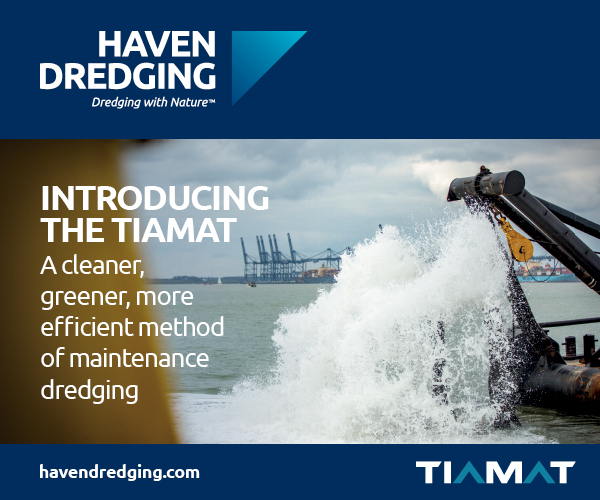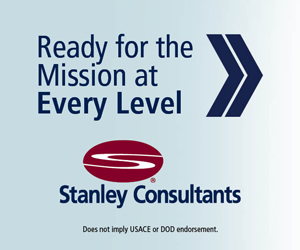
4 minute read
Infrastructure Laws, Military Construction Stake USACE Presence in the Arctic
from America's Engineers: The People, Programs, and Projects of the U.S. Army Corps of Engineers '24-'25
BY JOHN BUDNIK
PACIFIC OCEAN DIVISION Alaska District
For the next decade, the U.S. Army Corps of Engineers (USACE) Alaska District remains committed to assisting Alaskan communities to strengthen their supply chains and promote economic growth; build climate-resilient infrastructure to help protect population centers, infrastructure, and nearby ecosystems; and, finally, to contribute to the nation’s goals in the Arctic through its Civil Works and Military Construction missions.
In 2022, Congress enacted the Bipartisan Infrastructure Law (BIL) and the Disaster Relief Supplemental Appropriations Act (DRSAA). These two pieces of legislation are major investments in the state that will bring about $1 billion of Civil Works projects and nearly a decade of steady construction.
advertisement

The DRSAA-funded Barrow Coastal Erosion Project in Utqiagvik, formerly known as Barrow, and the BIL-funded Port of Nome Safety Modification Project in Nome are two large projects where USACE will be working alongside its partners for the foreseeable future.
“As the need for economic stability and national security in the Arctic grows ever more important, USACE stands with Alaskan communities and the broader American nation as we engineer solutions to our nation’s toughest challenges in the far north,” Jeffrey Palazzini, district commander, said during a ceremony in honor of the partnership agreement signed between the city of Nome and USACE for the new port in January 2024.

Utqiagvik is the political and economic hub of the North Slope Borough, providing important services to surrounding villages in northern Alaska. The community experiences frequent and severe coastal storms, resulting in flooding and erosion that threaten public health and safety, the economy, critical infrastructure valued at more than $1 billion, and access to subsistence areas, as well as cultural and historical resources.
advertisement

USACE plans to begin building the first portion of a revetment in front of the Utqiagvik downtown area in the spring of 2025. Future work for the entire project consists of more rock revetments, a protective berm, and raising and armoring Stevenson Street. The project is scheduled to be completed in 2031.
Meanwhile, USACE is preparing to award a construction contract for the upcoming Port of Nome expansion. The project aims to provide larger vessels with improved access to Nome’s existing harbor by enlarging the outer basin and creating a new deep-water basin at a depth of minus 40 feet. With no major road systems in the region, a robust and efficient transportation hub at Nome is foundational to the longterm viability of surrounding communities.
The new infrastructure in Nome will be the nation’s first arctic deep-draft port in an area with growing national interest for multiple reasons stemming from climate change and a dynamic security environment. While the new port will be a boon for the nation and region, USACE also continues to be the primary design and construction agent for its military partners in Alaska that will help provide the facilities necessary for mission readiness and to meet the goals of the Department of Defense’s “2024 Arctic Strategy.”
Currently, USACE is extending the north-south runway at Joint Base Elmendorf-Richardson by about 2,500 feet, which will allow the Air Force to have two functional runways of about 10,000 feet each. The construction contract was awarded in 2022 at about $309 million, and is scheduled to be completed by 2026.
advertisement

Meanwhile, USACE completed the largest child development center in the entire Army at Fort Wainwright near Fairbanks in February 2024. The 43,000-square-foot facility, complete with a multipurpose gymnasium, plays an important role in improving the quality of life of service members and their families in the Last Frontier. Furthermore, a 118,500-square-foot barracks is underway at the installation, and is the first of three planned over the next 10 years to meet the needs of the Army in the far north.
“Quality-of-life upgrades for Soldiers and their families are a central part of the USACE mission,” Palazzini said. “In a rapidly changing Arctic, these projects and others serve an important purpose for the Army’s readiness.” AE
—
Visit www.Americas-Engineers.com to sign up for a free print edition of our annual publication and to join our weekly newsletter.










